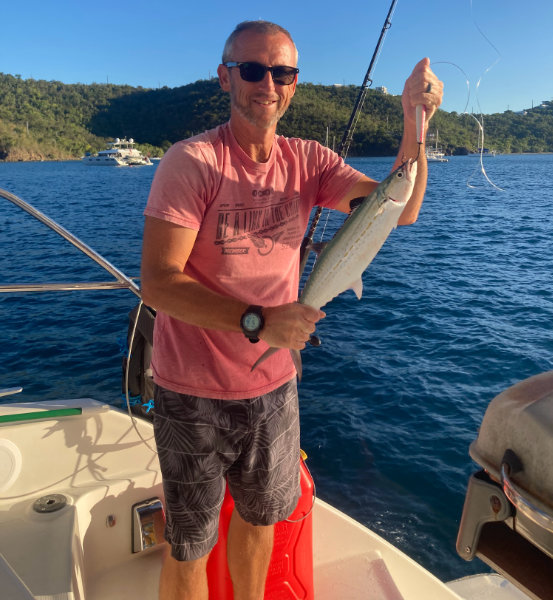Well, it’s something I’ve dreaded since I learned about it before we ever set sail. Ciguatera. Not sure what that is?
Ciguatera: poisoning by neurotoxins as a result of eating the flesh of tropical marine fish that carries a toxic dinoflagellate.
It doesn’t cook out. You can’t see it. And it technically never goes away. I’ve written about it a few times, actually. Brief mention here regarding a barracuda in the Exumas, and a more detailed description here, also in the Exumas and related to a trigger fish. But here’s a Wiki description of the possible symptoms:
Diarrhea, vomiting, numbness, itchiness, sensitivity to hot and cold, dizziness, and weakness (click the Wiki description link for even more details) Sounds fun, right?
And on top of it all – I’m not technically supposed to eat fish (any fish) drink alcohol, or eat nuts for the next six months. There’s a risk of reactivating the symptoms. We’ll see how long I hold out on fish tacos from Heidi’s…
So what am I rambling about? Ciguatera is something that has been on my radar for a long time – and now, it has finally hit home. Like, literally. I got ciguatera last Sunday. Technically it was Monday, at 2am, after eating this Cero Mackeral for dinner. ⬇︎

Fortunately I got a mild case. I spent about 8 hours running back and forth to the bathroom. I was very nauseous, but managed to not actually vomit. Turns out, had I actually puked, I may have been better off. The faster you get the fish out, the better. But it hadn’t sunk it yet that it was Ciguatera. I’d spent alllll day Sunday in the sun (even had the touristy lobster sunburn to prove it) and frequently have stomach issues.
I’m going to guess it was sometime the next day that I realized the symptoms were multiplying – and not related to my Sunday Funday…
So what symptoms did my mild case have? The most obvious was/is a weird tingle/burn on my tongue/lips when I drink anything ice cold. I also ran into this with my left hand when I grabbed frozen foods at the grocery store this weekend when we were on a provisioning run. Yep, mostly just the left hand. So weird.
And the itching. Oh. My. God. The itching. Mostly centralized on my torso and joints, the itching was/is insane. It’s a deep, all encompassing itch. I already take Xyzal nightly, so I added a morning dose of Claritin. It did not phase it. I finally resorted to a constant flow of Benadryl – for the past week. And Tylenol for the full body aches. Fun times. (Sorry for all of the loopy conversations I’ve had with people all week while I was under the influence of Benadryl 😆)
I think, as of yesterday (Monday, 8 days later) I’m finally turning the corner. I’m getting some sleep (I couldn’t sleep with all of the itching) and the cold/hot weirdness is much less noticeable today. The itching now seems to be tamed by a Benadryl before bed and again sometime when the itching starts back up in the middle of the night. And I’m still taking Tylenol for the aches and, weirdly, it helps with the tingle in my hands and feet.
All of this to say:
- It’s not as bad as I imagined (So thankful for the mild case!)
- Pay attention to where you’re catching! For half a second, as I was filleting the fish we pulled from the shallows near our mooring ball, I considered it. But then we ate it anyway 😬
We were super vigilant during our seasons in the Bahamas. Then, as we got south of Martinique, we just stopped worrying about it. Apparently the neurotoxins aren’t on the reefs that far south. I’m not sure why we were so lax last week, as it’s a common thing up here in the Virgin Island reefs. All I can say is I’m sure glad the symptoms are almost gone!







OH Honey I’m so sorry to hear this. Very thankful you are getting better. So it’s just the fish around the Islands that have it? Hope you’re all better very soon. Love Mom
Hi, I’m not sure where you got your info about not being in the West Indies but, Ciguatera is world-wide. The Centers for Disease Control estimates that around 50,000 cases occur globally each year. Other estimates suggest up to 500,000 cases per year. It is the most frequent seafood poisoning. It occurs most commonly in the Pacific Ocean, Indian Ocean, and the Caribbean Sea between the latitudes of 35°N and 35°S. The risk of the condition appears to be increasing due to coral reef deterioration and increasing trade in seafood.
Interesting.
PS – forgot to say, glad you are feeling better. 🙂